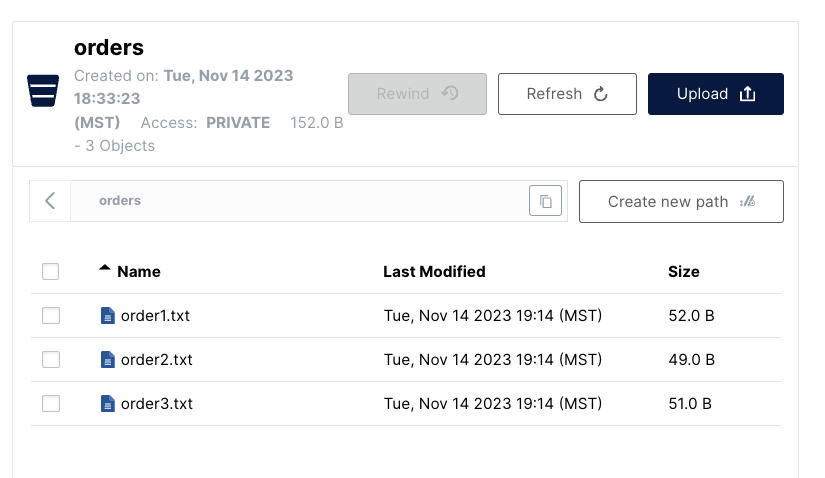In this quickstart, you'll create a microservice to demonstrate Dapr's bindings API to work with external systems as inputs and outputs. The service listens to input binding events from a system CRON and then outputs the contents of local data to a MinIO output binding via the S3 interface.
Visit this link for more information about Dapr and Bindings.
Note: This example leverages the Dapr SDK. If you are looking for a Bindings example using HTTP REST only click here.
- Dapr runtime and CLI: https://docs.dapr.io/getting-started/install-dapr-cli/
- Create a MinIO server locally by following these instructions:
- MacOS: https://min.io/docs/minio/macos/index.html
- Windows: https://min.io/docs/minio/windows/index.html
## Start the server (MacOS)
minio server ~/data --console-address :9090
## Start the server (Windows)
.\minio.exe server C:\minio --console-address :9090-
Open the console in a browser at
http://127.0.0.1:9090/loginand login with the regular admin credentialsminioadmin:minioadmin. -
Create an access key to use with the Dapr component using the Access Keys page at
http://127.0.0.1:9090/access-keys. -
Update the minio-s3.yaml file
accessKeyandsecretKeymetadata properties with your newly created access and secret key values from MinIO.
Note: You will also need to update the
endpointvalue if you have changed the port that the MinIO S3 API is running on.
This quickstart includes a single Java service batch, that gets triggered every 10 seconds by the Dapr Cron input binding and outputs local data to an S3 bucket specified by the Dapr S3 output binding.
- Open a new terminal window, change directories to
./batchin the quickstart directory and run:
cd ./batch
mvn clean install- Run the java application alongside the Dapr process:
dapr run --app-id batch-sdk --app-port 8080 --resources-path ../resources -- java -jar target/BatchProcessingService-0.0.1-SNAPSHOT.jarAfter the Cron input binding has triggered a batch process call, the output from the application logs should look something similar to the following.
...
== APP == 2023-11-15 11:25:46.005 INFO 87759 --- [nio-8080-exec-3] c.s.c.BatchProcessingServiceController : Processing batch..
== APP == 2023-11-15 11:25:46.170 INFO 87759 --- [nio-8080-exec-3] c.s.c.BatchProcessingServiceController : Order (id: 1, customer: 'John Smith', price: 100.32)
== APP == 2023-11-15 11:25:46.170 INFO 87759 --- [nio-8080-exec-3] c.s.c.BatchProcessingServiceController : Creating file: order1.txt
== APP == 2023-11-15 11:25:46.391 INFO 87759 --- [nio-8080-exec-3] c.s.c.BatchProcessingServiceController : Order (id: 2, customer: 'Jane Bond', price: 15.4)
== APP == 2023-11-15 11:25:46.392 INFO 87759 --- [nio-8080-exec-3] c.s.c.BatchProcessingServiceController : Creating file: order2.txt
== APP == 2023-11-15 11:25:46.397 INFO 87759 --- [nio-8080-exec-3] c.s.c.BatchProcessingServiceController : Order (id: 3, customer: 'Tony James', price: 35.56)
== APP == 2023-11-15 11:25:46.398 INFO 87759 --- [nio-8080-exec-3] c.s.c.BatchProcessingServiceController : Creating file: order3.txt
== APP == 2023-11-15 11:25:46.401 INFO 87759 --- [nio-8080-exec-3] c.s.c.BatchProcessingServiceController : Finished processing batch
...- Browse the
ordersbucket in your MinIO console where you should see the following three order files uploaded as follows.
